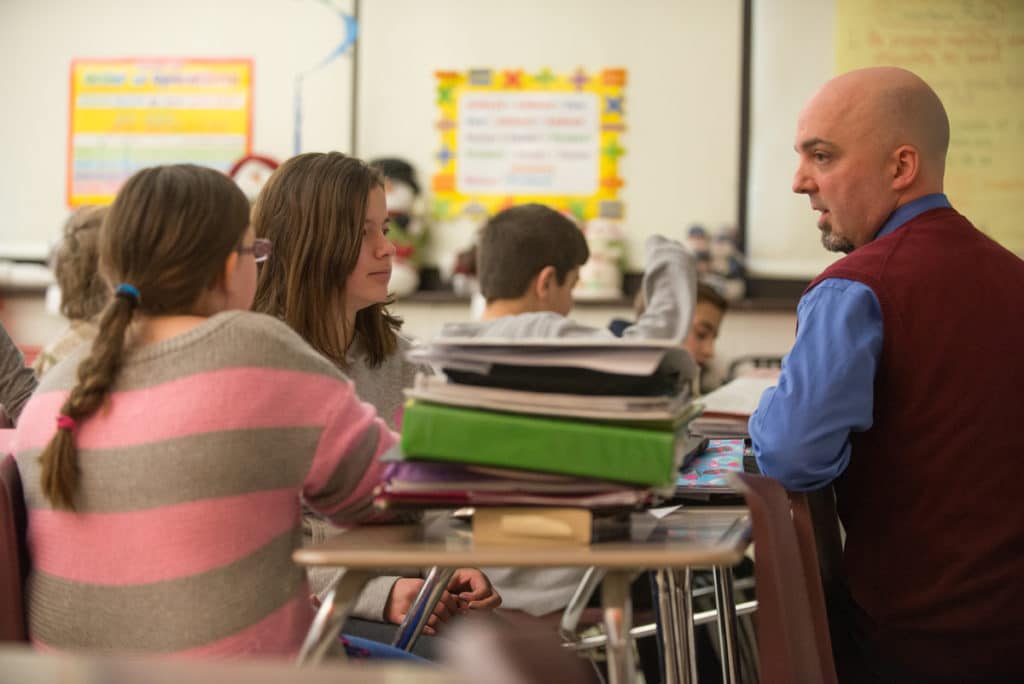
What do you do when a student flat-out denies doing something you know (or are at least pretty sure) she did? Are consequences ever appropriate in this situation? Do you just give up and move on? Do you enlist parents’ help? It can be a hard call to make.
I remember having to make a decision like this when I discovered that a child had written on the stalls in the girls’ bathroom that was next to my classroom. From the handwriting, color of the pen used, and, most tellingly, the spelling, I was certain the writer was one of my students. (One thing that made this incident unique and that made me laugh out loud even then was that her graffiti actually was quite positive: “I love my teacher,” “School is great, etc.”) But, when I brought her into the bathroom and asked her about it, she looked me right in the eyes and said, “I didn’t do it.”
A child’s firm and seemingly sincere denial can be challenging for teachers. We want to hold students accountable for their actions and for following classroom and school rules, but we don’t want to impose consequences when they are not warranted. We especially don’t want to make a mistake and have a child make reparations for something he truly didn’t do. However, we also want our students to be and become responsible citizens who can admit when they make a mistake, face the consequences, and make reparation if appropriate. And we certainly don’t want to give the message that denial is a way to avoid taking responsibility.
So, what can we do? Each situation is different, but here are a few general tips to help you respond effectively in situations like these:
If you saw or are otherwise fairly certain that a child broke a class or school rule, impose a consequence even if the child denies the behavior. In the case of my student, I recall saying something like, “I know it can be hard to admit when you have done something wrong. It’s hard for me too. I can see that this is your writing. Our rules say that we will take care of our environment, so I’m going to give you some cleaning supplies. The wall needs to be cleaned.” In my experience, if you can calmly and neutrally give the consequence, children will accept it (although they might not admit what they did wrong in that moment). If a child does accept the consequence, consider the problem addressed and move on, even if the child never actually says that s/he caused the problem.
In some situations, you may have a pretty strong instinct that a child was responsible for a problem, but you can’t honestly be sure, even after talking to as many people involved as possible. If this is the case, try to let it go. You can’t force a child to admit what he is not yet ready to admit, and you can’t in good faith impose a consequence when you’re not sure. And remember that letting it go means just that—no final words to the child to try to induce guilt, and no referring to the incident later.
It can be upsetting and feel personal when a student denies doing something, especially when her actions have had a serious impact on others. However, when you speak harshly, judgmentally (“I know you’re lying!”), or try to force an admission (“You can just sit here until you’re ready to admit what you did.”), children are more likely to dig in their heels and stick to their original position no matter what. Try to keep your tone, words, and body language calm, neutral, and respectful.
Often in the moment, our first human instinct (for adults and children) is to deny, deny, deny. That instinct often diminishes with a little time and space. When possible, try to provide both to your student. Only discuss the incident when you are both cooled off and calm.
We care about our students and making sure our rules are honored. But, sometimes, our efforts to protect our students and honor our rules can cause us to investigate classroom or school incidents with a “Law and Order” approach—treating some students like witnesses, others like the accused, and ourselves like judge and jury. Of course, you may want to talk with other students about what they know or saw, but be careful that you do so privately and in a way that invites honesty (not just telling you what you want to hear) and that preserves children’s relationships with each other.
If you discover that a child actually did not do something for which you imposed consequences, apologize and make some reparation yourself. Once I had to apologize to a student for doing just that. I followed up by inviting him to a private, special lunch. We cannot undo our mistakes, but we can model for students what to do when we make them.
Margaret Berry Wilson is the author of several books, including: The Language of Learning, Doing Science in Morning Meeting (co-authored with Lara Webb), Interactive Modeling, and Teasing, Tattling, Defiance & More.